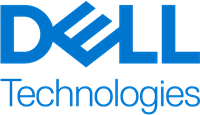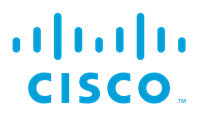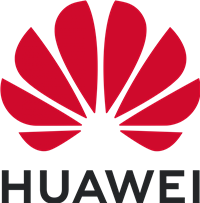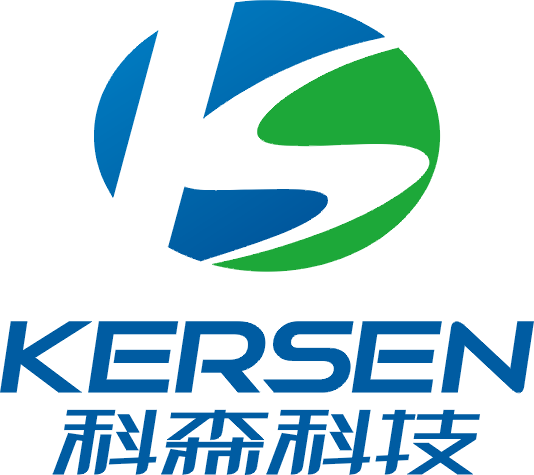Green Supply Chain CITI
Corporate Climate Action CATI
CITI score
22.30
Total Possible Score: 100Total rank
92
Out of 800 total brandsIndustry rank
2
Out of 12 total brands in the Internet Platform industryIndustry rank
22
Out of 77 total brands in the IT/ ICT industry
CATI score
34.00
Total Possible Score: 100Total rank
229
Out of 831 total brandsIndustry rank
4
Out of 12 total brands in the Internet Platform industryIndustry rank
39
Out of 77 total brands in the IT/ ICT industry
CITI Category Scores Analysis
CATI Category Scores Analysis
CITI Category Scores Benchmarking
CATI Category Scores Benchmarking
-
Mechanism Construction
4/ 4 -
Policy Implementation
4/ 4 -
Screen suppliers' environmental compliance
1.2/ 6 -
Encourage suppliers to track their own environmental performance
0.3/ 9 -
Encourage suppliers to take corrective action and issue public explanations
0/ 15 -
Disclose the ecological and environmental impacts, management targets, and progress of the supply chain
1.04/ 6.24 -
Encourage suppliers to measure and disclose data on resource consumption and pollutant release and transfer
0/ 19.76 -
Energy use and response to climate change
6.8/ 20 -
Promote green supply chain management along the value chain
0.8/ 8 -
Conduct supply chain information disclosure and due diligence
2.88/ 4.8 -
Disclose green supply chain best practices
1.28/ 3.2
-
Governance:
Policy Construction4/ 5 -
Governance:
Mechanism Construction5/ 5 -
Measurement & Disclosure:
Scope 1&2 Emissions8/ 10 -
Measurement & Disclosure:
Scope 3 Emissions4/ 5 -
Carbon Targets Setting:
Scope 1&2 Targets3/ 7 -
Carbon Targets Setting:
Scope 3 Targets1/ 7 -
Performance against Carbon Targets:
Scope 1&2 Emission Reduction Progress2/ 6 -
Performance against Carbon Targets:
Scope 3 Emission Reduction Progress1/ 6 -
Measurement & Disclosure:
Product Carbon Footprint0/ 6 -
Climate Action:
Decarbonization in Company Operation11.5/ 13 -
Climate Action:
Affiliated Company Engagement0/ 6 -
Climate Action:
Decarbonization in Value Chain3.5/ 7 -
Climate Action:
Upstream Supplier Engagement0/ 17
CITI Category Scores
CATI Category Scores
Indicator
Score Total scoreMechanism Construction
4.00 4.00-
1.1.1
Announce a commitment to green supply chain development, or integrate green supply chain development into sustainable development strategies
0.40 0.40 -
1.1.2
Establish a management team or appoint someone to promote green supply chain management
0.80 0.80 -
1.1.3
Incorporate green procurement requirements into written documents such as Supplier Code of Conduct
2.00 2.00 -
1.1.4
Publicly disclose contact information and establish a regular communication mechanism with stakeholders—such as the public and environmental organizations—regarding the company’s efforts in environmental protection and climate change response
0.80 0.80
Policy Implementation
4.00 4.00-
1.2.1
Publicly disclose green procurement processes and methods
1.60 1.60 -
1.2.2
Publicly disclose the adoption of automated management tools to dynamically track environmental risks in the supply chain
0.80 0.80 -
1.2.3
Publicly disclose progress in green supply chain management
1.60 1.60
Screen suppliers' environmental compliance
1.20 6.00-
2.1.1
Screen and track environmental compliance of direct suppliers
1.20 1.20 -
2.1.2
Screen and track environmental compliance of indirect suppliers
0.00 1.20 -
2.1.3
Screen and track environmental compliance of raw material supplier suppliers
0.00 1.20 -
2.1.4
Screen and track environmental compliance of chemical suppliers
0.00 0.60 -
2.1.5
Screen and track environmental compliance of wastewater treatment plants
0.00 0.60 -
2.1.6
Screen and track environmental compliance of solid waste transportation, utilization and disposal facilities
0.00 0.90 -
2.1.7
Screen and track environmental compliance of logistics service providers
0.00 0.30
Encourage suppliers to track their own environmental performance
0.30 9.00-
2.2.1
Encourage direct suppliers to track their own environmental performance
0.30 1.80 -
2.2.2
Encourage indirect suppliers to track their own environmental performance
0.00 2.40 -
2.2.3
Encourage raw material suppliers to track their own environmental performance
0.00 1.20 -
2.2.4
Encourage chemical suppliers to track their own environmental performance
0.00 0.90 -
2.2.5
Encourage wastewater treatment plants to track their own environmental performance
0.00 0.90 -
2.2.6
Encourage solid waste transportation, utilization and disposal facilities to track their own environmental performance
0.00 0.90 -
2.2.7
Encourage logistics service providers to track their own environmental performance
0.00 0.90
Encourage suppliers to take corrective action and issue public explanations
0.00 15.00-
2.3.1
Encourage direct suppliers to take corrective action and issue public explanations regarding environmental violations
0.00 3.30 -
2.3.2
Encourage indirect suppliers to take corrective action and issue public explanations regarding environmental violations
0.00 5.70 -
2.3.3
Encourage raw material suppliers to take corrective action and issue public explanations regarding environmental violations
0.00 2.40 -
2.3.4
Encourage chemical suppliers to take corrective action and issue public explanations regarding environmental violations
0.00 0.90 -
2.3.5
Encourage wastewater treatment plants to take corrective action and issue public explanations regarding environmental violations
0.00 0.90 -
2.3.6
Encourage solid waste transportation, utilization and disposal facilities to take corrective action and issue public explanations regarding environmental violations
0.00 0.90 -
2.3.7
Encourage logistics service providers to take corrective action and issue public explanations regarding environmental violations
0.00 0.90
Disclose the ecological and environmental impacts, management targets, and progress of the supply chain
1.04 6.24-
3.1.1
Publicly disclose supply chain data on resource consumption, chemical use, pollutant release and transfer, and impacts on biodiversity
0.52 3.12 -
3.1.2
Publicly disclose targets and performance in reducing supply chain ecological and environmental impact
0.52 3.12
Encourage suppliers to measure and disclose data on resource consumption and pollutant release and transfer
0.00 19.76-
3.2.1
Encourage direct suppliers to calculate and publicly disclose pollutant release and transfer register (PRTR) data
0.00 4.16 -
3.2.2
Encourage direct suppliers to set and publicly disclose targets and progress in reducing resource consumption or pollutant emissions
0.00 4.16 -
3.2.3
Encourage indirect suppliers to calculate and publicly disclose pollutant release and transfer register (PRTR) data
0.00 7.28 -
3.2.4
Encourage indirect suppliers to set and publicly disclose targets and progress in reducing resource use or pollutant emissions
0.00 4.16
Energy Use & Climate Action
6.80 20.00-
4.1
Energy use and response to climate change
6.80 20.00
Promote green supply chain management along the value chain
0.80 8.00-
5.1.1
Empower value chain partners to practice green supply chain management
0.80 0.80 -
5.1.2
Guide value chain partners to track environmental compliance of their own supply chains
0.00 3.20 -
5.1.3
Guide value chain partners to promote accounting and public disclosure of pollutant release and transfer register (PRTR) data by their suppliers
0.00 3.20 -
5.1.4
Guide value chain partners to implement pollution reduction projects in their own supply chains and publicly disclose best practices
0.00 0.80
Conduct supply chain information disclosure and due diligence
2.88 4.80-
5.2.1
Publicly disclose and update supplier list at least annually OR Company has pushed its suppliers to use the Blue EcoChain or other automated methods to track their own environmental performance and commit to provide public disclosures regarding violations in a timely manner, thereby accepting public supervision
2.88 2.88 -
5.2.2
Publicly disclose supply chain environmental information through the Green Supply Chain Map or equivalent maps
0.00 1.92
Disclose green supply chain best practices
1.28 3.20-
5.3.1
Publicly disclose best practices in reducing supply chain environmental risks or impacts through supply chain environmental management
0.80 1.60 -
5.3.2
Publicly disclose Environmental Product Declarations (EPDs), product water footprints, and other relevant information to help consumers understand the full life-cycle ecological and environmental impacts of products
0.00 0.80 -
5.3.3
Participate in establishing recycling systems for waste or end-of-life products, guide stakeholders in recycling activities, and achieve a closed-loop material flow from "resources - products - consumption - recycled resources"
0.48 0.80
Total score
22.30 100The total score of the company's Corporate ClimateAction CATI Index evaluation is converted by a factor of 20% to Indicator 4.1 of the Green Supply Chain CITI Index.
Indicator
Score Total score
Governance:
Policy Construction
4.00
5.00
-
1.1.1
Company has committed to climate actions and made climate declaration(s)
2.00 2.00 -
1.1.2
Company has developed corporate carbon neutrality plan and management system
1.00 1.00 -
1.1.3
Company has incorporated policies regarding supplier energy conservation, emissions reduction, and carbon accounting and reporting into written documents such as the supplier code of conduct
1.00 2.00
Governance:
Mechanism Construction
5.00
5.00
-
1.2.1
Company has integrated climate-related issues into its business strategy and has specific climate-related risk management procedures in place
2.00 2.00 -
1.2.2
Company has integrated climate-related issues into board-level monitoring, management and overstight responsibility
1.00 1.00 -
1.2.3
Company offers capacity building and financial incentives, and/or launches innovative projects for suppliers to reduce emissions
2.00 2.00
Measurement & Disclosure:
Scope 1&2 Emissions
8.00
10.00
-
2.1.1
Company has publicly disclosed Scope 1&2 emission data
5.00 5.00 -
2.1.2
Company has publicly disclosed comprehensive energy consumption and energy usage by energy types
1.00 3.00 -
2.1.3
Company has publicly disclosed carbon intensity or energy intensity
2.00 2.00
Measurement & Disclosure:
Scope 3 Emissions
4.00
5.00
-
2.2.1
Company has publicly disclosed Scope 3 emissions
4.00 4.00 -
2.2.2
Company collects supplier carbon emission data on a regular basis
0.00 1.00
Measurement & Disclosure:
Product Carbon Footprint
0.00
6.00
-
2.3.1
Company has publicly disclosed product carbon footprint
0.00 6.00
Carbon Targets Setting:
Scope 1&2 Targets
3.00
7.00
-
3.1.1
Company has set and publicly disclosed its ongoing Scope 1&2 emission reduction targets or energy consumption targets
0.00 3.00 -
3.1.2
Company has set and publicly disclosed its Scope 1&2 carbon neutrality target
2.00 2.00 -
3.1.3
Company has set and publicly disclosed its renewable energy target
1.00 1.00 -
3.1.4
Scope 1 & 2 climate targets are certified or approved by a third party
0.00 1.00
Carbon Targets Setting:
Scope 3 Targets
1.00
7.00
-
3.2.1
Company has set and publicly disclosed its ongoing Scope 3 emission reduction targets
0.00 3.00 -
3.2.2
Company has set and publicly disclosed its Scope 3 carbon neutrality target
0.00 2.00 -
3.2.3
Company has set specific targets to motivate suppliers to set their own climate targets
1.00 1.00 -
3.2.4
Scope 3 climate targets are certified or approved by a third party
0.00 1.00
Performance against Carbon Targets:
Scope 1&2 Emission Reduction Progress
2.00
6.00
-
4.1.1
Company has publicly disclosed progress made towards its Scope 1 & 2 emissions reduction targets or energy consumption targets
0.00 3.00 -
4.1.2
Company has publicly disclosed progress made against its Scope 1&2 carbon neutrality target
0.00 1.00 -
4.1.3
Company has publicly disclosed progress made against its renewable energy target
2.00 2.00
Performance against Carbon Targets:
Scope 3 Emission Reduction Progress
1.00
6.00
-
4.2.1
Company has publicly disclosed progress made against its Scope 3 emission reduction targets
0.00 3.00 -
4.2.2
Company has publicly disclosed progress made against its Scope 3 carbon neutrality target
0.00 1.00 -
4.2.3
Company tracks its suppliers’ climate target setting progress
1.00 2.00
Climate Action:
Decarbonization in Company Operation
11.50
13.00
-
5.1.1
Company has conducted non-fossil energy utilization projects and/or green power procurement and disclosed associated emission reductions
4.00 4.00 -
5.1.2
Company has conducted energy monitoring and energy management
1.00 1.00 -
5.1.3
Company has conducted energy efficiency improvement projects and disclosed associated emission reductions
2.50 3.00 -
5.1.4
Company has conducted other types of emission reduction projects and disclosed associated emission reductions
1.50 2.00 -
5.1.5
Company has reduced emissions through carbon offsets, and disclosed associated emission reductions
1.50 2.00 -
5.1.6
Company has incorporated emission reduction approaches into the product design process
1.00 1.00
Climate Action:
Affiliated Company Engagement
0.00
6.00
-
5.2.1
Affiliates have measured and publicly disclosed their carbon emission at facility level
0.00 3.00 -
5.2.2
Affiliates have set carbon targets, tracked and public disclosed reduction progress at facility level
0.00 3.00
Climate Action:
Decarbonization in Value Chain
3.50
7.00
-
5.3.1
Company promotes suppliers to conduct corporate greenhouse gas and energy management
1.00 1.00 -
5.3.2
Company has launched energy saving initiatives and/or low carbon technology innovation initiatives with material suppliers, and disclosed associated emission reductions
0.50 1.00 -
5.3.3
Company has launched emission reduction initiatives with logistics suppliers, and disclosed associated emission reductions
0.50 1.00 -
5.3.4
Company has published best practices on supply chain carbon management annually
0.00 2.00 -
5.3.5
Company has established (or coordinated with downstream customers to establish) end-of-life recycling mechanisms to recycle used products
0.50 0.50 -
5.3.6
Company has promoted suppliers to replace primary production raw materials with recycled materials or lower carbon substitutes, and disclosed associated emission reductions
0.50 1.00 -
5.3.7
Company has established (or coordinated with downstream customers to establish) end-of-life recycling mechanisms to recycle used products
0.50 0.50
Climate Action:
Upstream Supplier Engagement
0.00
17.00
-
5.4.1
Direct suppliers have measured and publicly disclosed their carbon emissions at facility level
0.00 2.00 -
5.4.2
Direct suppliers have set carbon targets, tracked and publicly disclosed reduction progress at facility level
0.00 3.00 -
5.4.3
Indirect suppliers have measured and publicly disclosed their carbon emissions at facility level
0.00 4.00 -
5.4.4
Indirect suppliers have set carbon targets, tracked and publicly disclosed reduction progress at facility level
0.00 3.00 -
5.4.5
Company employs the Blue EcoChain or other automated methods to empower upstream suppliers to manage their supply chain carbon emissions, OR promote large suppliers to publicly disclose product carbon footprint data
0.00 5.00
Total score
34.00 100As carbon hotspots vary from industry to industry, a weighting factor applies across four of the five CATI activity areas: Measurement & Disclosure (15%; Indicator 2.3.1 (6%) does not apply), Carbon Targets Setting (14%), Performance against Carbon Targets (12%) and Climate Action (43%). The default weighting factors for each industry are shown in the CATI Evaluation Guidelines.


























